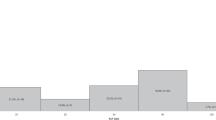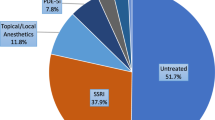Abstract
We evaluated the role of dopamine (DA) transporter gene polymorphism in lifelong premature ejaculation (LPE) and its role in determining the response to paroxetine and escitalopram. Eighty consecutive patients and controls were recruited. Sixty of them suffered from LPE. They were divided into two equal groups. One group received paroxetine 20 mg daily for 3 months and the other one received ecistalopram 20 mg daily for 3 months. Their wives were instructed to measure the intra-vaginal ejaculation latency time using stopwatch. Five milliliters of blood was withdrawn from patients and controls for PCR analysis. The present study revealed that the mean ages of the patients and controls were 41.42 and 36.4 years, respectively. The majority of the patients were of (10R/10R) genotypes of the DA transporter gene polymorphism, whereas the controls were of (6R/6R) genotypes and this revealed statistically significant result (P-value=0.001). Both paroxitine and escitalopram significantly delayed ejaculation in the responders (P-values=0.001 and 0.001, respectively). The study revealed significant association between such response and DA transporter gene polymorphism (P-values of fold increase and log FI were 0.019 and 0.010, respectively). To the best of our knowledge, this is the first report to demonstrate a highly significant association between such response and DA transporter gene polymorphism in patients with LPE.
This is a preview of subscription content, access via your institution
Access options
Subscribe to this journal
Receive 8 print issues and online access
$259.00 per year
only $32.38 per issue
Buy this article
- Purchase on Springer Link
- Instant access to full article PDF
Prices may be subject to local taxes which are calculated during checkout


Similar content being viewed by others
References
McMahon CG, Althof SE, Waldinger MD, Porst H, Dean J, Sharlip ID et al. An evidence-based definition of lifelong premature ejaculation: report of the International Society for Sexual Medicine (ISSM) Ad Hoc Committee for the definition of premature ejaculation. J Sex Med 2008; 5: 1590–1606.
Serefoglu EC, McMahon CG, Waldinger MD, Althof SE, Shindel A, Adaikan G et al. An evidence-based unified definition of lifelong and acquired premature ejaculation: Report of the second International Society for Sexual Medicine Ad Hoc Committee for the Definition of Premature Ejaculation. J Sex Med 2014; 11: 1423–1441.
Waldinger M, Quinn P, Dilleen M, Mundayat R, Schweitzer D, Boolell M . A multinational population survey of intravaginal ejaculation latency time. J Sex Med 2005; 2: 292–297.
Waldinger M, McIntosh J, Schweitzer DH . A five-nation survey to assess the distribution of the intravaginal ejaculatory latency time among the general male population. J Sex Med 2009; 6: 2888–2895.
Waldinger MD, Rietschel M, Nothen MM, Hengeveld MW, Olivier B . Familial occurrence of primary premature ejaculation. Psychiatr Genet 1998; 8: 37–40.
Jern P, Santtila P, Witting K, Alanko K, Harlaar N, Johansson A et al. Premature and delayed ejaculation: genetic and environmental effects in a population-based sample of Finnish twins. J Sex Med 2007; 4: 1739–1749.
Janssen PK, van Schaik R, Zwinderman AH, Olivier B, Waldinger MD . The 5-HT1A receptor C (1019) G polymorphism influences the intravaginal ejaculation latency time in Dutch Caucasian men with lifelong premature ejaculation. Pharmacol Biochem Behav 2014; 121: 184–188.
Corona G, Jannini EA, Vignozzi L, Rastrelli G, Maggi M . The hormonal control of ejaculation. Nat Rev Urol 2012; 9: 508–519.
Lotti F, Corona G, Rastrelli G, Forti G, Jannini EA, Maggi M . Clinical correlates of erectile dysfunction and premature ejaculation in men with couple infertility. J Sex Med 2012; 9: 2698–2707.
Corona G, Rastrelli G, Limoncin E, Sforza A, Jannini EA, Maggi M . Interplay between premature ejaculation and erectile dysfunction: a systematic review and meta-analysis. J Sex Med 2015; 12: 2291–2300.
Kawarai T, Kawakami H, Yamamura Y, Nakamura S . Structure and organization of the gene encoding human dopamine transporter. Gene 1997; 195: 11–18.
Fuke S, Suo S, Takahashi N, Koike H, Sasagawa N, Ishiura S . The VNTR polymorphism of the human dopamine transporter (DAT1) gene affects gene expression. Pharmacogenomics J 2001; 1: 152–156.
Vandenbergh DJ, Persico AM, Hawkins AL, Griffin CA, Li X, Jabs EW et al. Human dopamine transporter gene (DAT1 maps to chromosome 5p15.3 and displays a VNTR. Genomics 1992; 14: 1104–1106.
Mitchell RJ, Howlett S, Earl L, White NG, McComb J, Schanfield MS et al. Distribution of the 3′ VNTR polymorphism in the human dopamine transporter gene in world populations. Hum Biol 2000; 72: 295–304.
Shamloul R, Ghanem H, Abou-zeid A . Validity of the Arabic version of the sexual health inventory for men among Egyptians. Int J Impot Res 2004; 16: 452–455.
Waldinger MD, Zwinderman AH, Schweitzer DH, Olivier B . Relevance of methodological design for the interpretation of efficacy of drug treatment of premature ejaculation: a systematic review and meta-analysis. Int J Impot Res 2004; 16: 369–381.
Chan YH . Biostatistics102: quantitative data – parametric & non-parametric tests. Singapore Med J 2003a; 44: 391–396.
Chan YH . Biostatistics 103: qualitative data–tests of independence. Singapore Med J 2003b; 44: 498–503.
Santtila P, Jern P, Westberg L, Walum H, Pedersen CT, Eriksson E et al. The dopamine transporter gene (DAT1) polymorphism is associated with premature ejaculation. J Sex Med 2010; 7: 1538–1546.
Nakatome M, Honda K, Islam MN, Terada M, Yamazaki M, Kuroki H et al. Amplification of DAT1 (human dopaminetransporter gene) 3′ variable region in the Japanese population. Hum Hered 1995; 45: 262–265.
Nakatome M, Honda K, Tun Z, Kato Y, Harihara S, Omoto K et al. Genetic polymorphism of the 3′VNTR region of the human dopaminergic function gene DAT1 (human dopamine transporter gene) in the Mongolian population. Hum Biol 1998; 68: 509–515.
Kim JW, Kim BN, Cho SC . The dopamine transporter gene and the impulsivity phenotype in attention deficit hyperactivity disorder: a case-control association study in a Korean sample. J Psychiatr Res 2006; 40: 730–737.
Safarinejad MR . Relationship between premature ejaculation and genetic polymorphisms of the dopamine transporter gene (SLC6A3). BJU Int 2011; 108: 292–296.
Kirchheiner J, Nickchen K, Sasse J, Bauer M, Roots I, Brockmöller J . A 40-basepair VNTR polymorphism in the dopamine transporter (DAT1) gene and the rapid response to antidepressant treatment. Pharmacogenomics J 2007; 7: 48–55.
Ozbek E, Tasci AI, Tugcu V, Ilbey YO, Simsek A, Ozcan L et al. Possible association of the 5-HTTLPRserotonin transporter promoter gene polymorphism with premature ejaculation in a Turkish population. Asian J Androl 2009; 11: 351–355.
Safarinejad MR . Polymorphisms of the serotonin transporter gene and their relation to premature ejaculation in individuals from Iran. J Urol 2009; 182: 2983, author reply 2983-4.
Luo SW, Wang F, Xie ZY, Huang XK, Lu YP . Study on the correlation of the 5-HTTLPR polymorphism with premature ejaculation in Han Chinese population. Beijing Da Xue Xue Bao 2011; 43: 514–518.
Zhu L, Mi Y, You X, Wu S, Shao H, Dai F et al. A meta-analysis of the effects of the 5-hydroxytryptamine transporter gene-linked promoter region polymorphism on susceptibility to lifelong premature ejaculation. PLoS ONE 2013; 8: e54994.
Janssen PK, Bakker SC, Réthelyi J, Zwinderman AH, Touw DJ, Olivier B et al. Serotonin transporter promoter region (5-HTTLPR) polymorphism is associated with the intravaginal ejaculation latency time in Dutchmen with lifelong premature ejaculation. J Sex Med 2009; 6: 276–284.
Zuccarello D, Ghezzi M, Pengo M, Forzan M, Frigo AC, Ferlin A et al. No difference in 5-HTTLPR and Stin2 polymorphisms frequency between premature ejaculation patients and controls. J Sex Med 2012; 9: 1659–1668.
Ozbek E, Otunctemur A, Simsek A, Polat E, Ozcan L, Köse O et al. Genetic polymorphism in the serotonin transporter gene-linked polymorphic region and response to serotonin reuptake inhibitors in patients with premature ejaculation. Clinics 2014; 69: 710–713.
Janssen PK, Zwinderman AH, Olivier B, Waldinger MD . Serotonin transporter promoter region (5-HTTLPR) polymorphism is not associated with paroxetine-induced ejaculation delay in dutch men with lifelong premature ejaculation. Korean J Urol 2014; 55: 129–133.
Salem AM, Kamel II, Rashed LA, GamalEl Din SF . Effects of paroxetine on intravaginal ejaculatory latency time in Egyptian patients with lifelong premature ejaculation as a function of serotonin transporter polymorphism. Int J Impot Res 2016; 29: 7–11.
Jern P, Eriksson E, Westberg LA . Reassessment of the possible effects of the serotonin transporter gene linked polymorphism 5-HTTLPR on premature ejaculation. Arch Sex Behav 2013; 42: 45–49.
Janssen PK, Olivier B, Zwinderman AH, Waldinger MD . Measurement errors in polymerase chain reaction are a confounding factor for a correct interpretation of 5-HTTLPR polymorphism effects on lifelong premature ejaculation: a critical analysis of a previously published meta-analysis of six studies. PLoS ONE 2014 3 9: e88031.
Author information
Authors and Affiliations
Corresponding author
Ethics declarations
Competing interests
The authors declare no conflict of interest.
Rights and permissions
About this article
Cite this article
Eltonsi, T., Tawfik, T., Rashed, L. et al. Study of the link between dopamine transporter gene polymorphisms and response to paroxetin and escitalopram in patients with lifelong premature ejaculation. Int J Impot Res 29, 235–239 (2017). https://doi.org/10.1038/ijir.2017.29
Received:
Revised:
Accepted:
Published:
Issue Date:
DOI: https://doi.org/10.1038/ijir.2017.29
This article is cited by
-
New technologies developed for treatment of premature ejaculation
International Journal of Impotence Research (2024)
-
Mechanism of Shugan Yidan fang, a Chinese herbal formula, in rat model of premature ejaculation
Basic and Clinical Andrology (2023)
-
The role of tyrosine hydroxylase within dapoxetine-assisted therapy against premature ejaculation
Molecular Biology Reports (2023)
-
Current and emerging treatment options for premature ejaculation
Nature Reviews Urology (2022)



